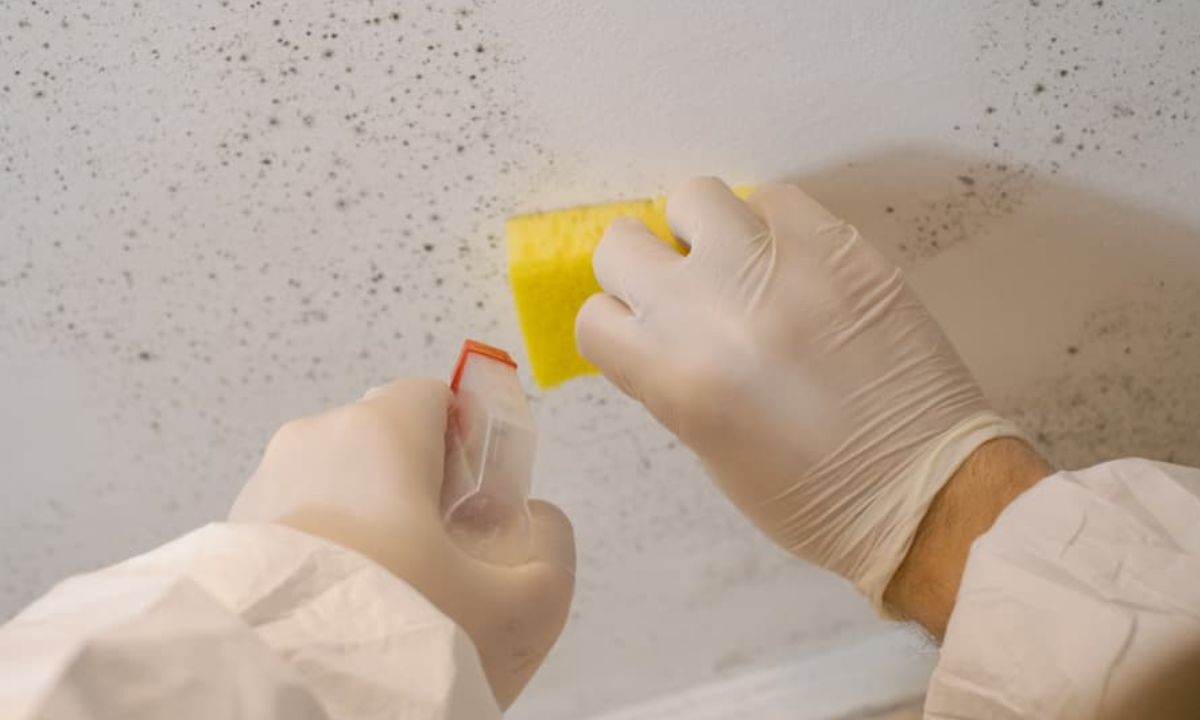You catch a whiff of it first, don’t you? That musty, earthy scent lurking in the basement after a humid summer week. Or maybe you’ve noticed a suspicious dark speckling creeping along the corner of your bathroom ceiling. Your first thought is probably a simple one: “I can probably handle that with some bleach and a scrub brush.”
I’m here to tell you, with the full weight of professional experience, that this is one of the most costly misconceptions a Toronto homeowner can have.
Mold isn’t just a surface-level stain; it’s a symptom of a deeper problem, a living organism that digs its roots deep into your building materials. Treating it as a simple cleaning task is like putting a band-aid on a broken bone. It might look better for a week, but the underlying issue is still there, festering and growing. In a city like ours, with its humid summers, freezing winters that drive condensation, and aging housing stock, mold is more than an eyesore—it’s a silent, persistent threat to your property’s value and your family’s health.
This isn’t about fear-mongering. It’s about empowerment through understanding. So, let’s pull back the curtain on what professional mold removal services in Toronto truly entail, and why settling for anything less than a certified, safety-driven remediation is a gamble you really don’t want to take.
Most of us think of mold as that ugly black gunk we see. But what you see is just the tip of the iceberg. Let me break it down.
Mold is a type of fungus that reproduces by releasing tiny, lightweight spores into the air. These spores are everywhere, both indoors and out, and they’re harmless in small quantities. The trouble starts when they find a perfect breeding ground: a place with moisture, oxygen, warmth, and an organic food source (like drywall, wood, or insulation).
When that happens, the spore lands, germinates, and sends out microscopic filaments called hyphae. These hyphae act like roots, boring into the porous material to digest it. The visible colony you see is actually the mycelium—the network of these filaments—and the spores it produces.
Why does this matter? Because wiping away the visible mycelium with a cloth does absolutely nothing to the root structure buried within your drywall or wood. It’s like cutting a dandelion off at the stem; the root is still there, ready to sprout again once the conditions are right. This is the fundamental reason why DIY mold removal so often fails.
So, if a squirt of bleach isn’t the answer, what is? A proper mold remediation process is a methodical, scientific approach. It’s not a cleaning job; it’s a controlled removal and restoration project. Here’s how a certified team, like the pros at Kleen Condition, typically operates.
You can’t fix what you don’t understand. The process begins with a thorough visual inspection of the property. A trained expert will hunt for the source of the moisture—be it a leaking pipe, poor ventilation, or a crack in the foundation—because without solving the moisture issue, any removal is pointless.
This often involves mold testing. This might include air sampling to check spore counts in the air versus the outdoors, and surface sampling to identify the specific species of mold. Is it the commonly found Cladosporium, or the more toxic Stachybotrys chartarum (the infamous “black mold”)? Knowing the enemy informs the safety protocols required.
This is where the pros separate themselves from the handymen. To prevent cross-contamination, the affected area is sealed off from the rest of the home using plastic sheeting and negative air pressure machines. Think of it as creating a quarantine zone.
Meanwhile, industrial-grade HEPA air scrubbers run constantly. These machines are workhorses, filtering out over 99.97% of airborne mold spores, preventing them from settling into your clean living room or bedroom. This step is non-negotiable for a safe mold removal service in Toronto.
Now, the actual removal begins. All porous materials that are heavily contaminated—like moldy drywall, insulation, and carpeting—are carefully removed, bagged, and disposed of as hazardous waste. Non-porous or semi-porous materials can often be salvaged through intensive HEPA vacuuming and antimicrobial cleaning. The goal is to remove all contaminated materials, not just coat them in chemicals.
Here’s the final, critical step that most DIY or “handyman” services completely skip: the clearance test. After the area is clean, dry, and visually clear of mold, a post-remediation test is conducted. This is your proof, your guarantee that the job was done correctly.
If the air and surface samples show that spore levels are now safe and within normal limits, you receive a clearance certificate. This document is gold. It’s your peace of mind and can be crucial for real estate transactions or insurance claims. Would you trust a “fixed” electrical job without a final inspection from a certified electrician? Mold remediation is no different.
Let’s be honest, the main driver for DIY is cost. But is it actually cheaper? Let’s lay it out on the table.
| Factor | DIY Mold “Removal” | Professional Mold Remediation |
|---|---|---|
| Cost (Upfront) | Seems low (bleach, gloves) | Higher initial investment |
| Effectiveness | Superficial; addresses only visible growth | Addresses root cause and all contamination |
| Health & Safety | High risk of spore exposure & improper handling | Certified protocols, PPE, and containment |
| Long-Term Result | Mold almost always returns | Permanently solved with a warranty |
| Documentation | None | Clearance Certificate provided |
| Hidden Cost | Potential for widespread contamination, health issues, and decreased property value | None; the job is done right the first time |
See the pattern? The “cheap” option often becomes the most expensive one in the long run. You’re not just paying for labor; you’re paying for expertise, industrial-grade equipment, and—most importantly—the certainty that your home is truly safe.
1. How much does professional mold removal cost in Toronto?
There’s no one-size-fits-all answer, as cost depends on the extent of contamination. A small, contained area might start around $1,500, while a severe, whole-basement infestation can run $10,000+. The only way to get an accurate quote is through an on-site inspection.
2. Is mold really that dangerous to my health?
For most healthy adults, minor exposure may only cause allergy-like symptoms (sneezing, itchy eyes). But for those with asthma, allergies, or compromised immune systems, it can be severe. Certain toxic molds can produce mycotoxins linked to more serious neurological and respiratory issues. Why risk it?
3. Will my home insurance cover the cost of mold removal?
It depends on the source. If the mold is a direct result of a “sudden and accidental” covered event—like a burst pipe—then likely yes. If it’s due to long-term neglect, poor maintenance, or humidity (like a leaky window seal over years), it probably won’t be covered. Always check with your provider.
4. How long does the entire remediation process take?
A standard-sized job, like a moldy bathroom or a section of a basement, typically takes 1 to 3 days from setup to clearance testing. Larger infestations will understandably take longer.
5. What’s the difference between mold removal and mold remediation?
This is a key distinction. “Removal” implies all mold is gone, which is impossible since spores are everywhere outdoors. “Remediation” is the accurate term—it means we’ve returned the mold levels inside your home to a natural, safe level and removed the active, threatening colony.
6. Can I just paint over mold with mold-killing primer?
Absolutely not. This is a classic homeowner mistake. Those primers are designed to encapsulate minor surface mildew on, say, a windowsill. They do nothing to address the root structure of a true mold colony growing within your walls. It will bleed through eventually.
Look, I get the temptation to save a few bucks. But when it comes to the structural integrity of your biggest investment and the air your family breathes every day, cutting corners is a fool’s errand. Professional mold removal services in Toronto aren’t an expense; they’re an investment in your long-term safety and peace of mind.
You wouldn’t perform your own root canal. You wouldn’t rewire your own house. So why would you trust something as complex and potentially hazardous as a biological infestation to a bottle of bleach and a hopeful prayer?
Don’t let a small problem become a catastrophic one. Get a certified inspection, understand the scope of the issue, and invest in a solution that actually works. Your lungs—and your future self—will thank you for it.
YOU MAY ALSO LIKE: Acusfoc: Leading Safety and Efficiency in Insulation in Valencia

